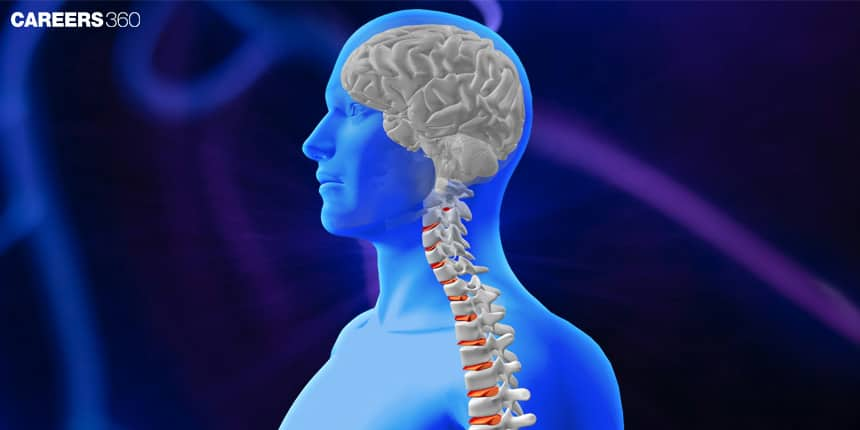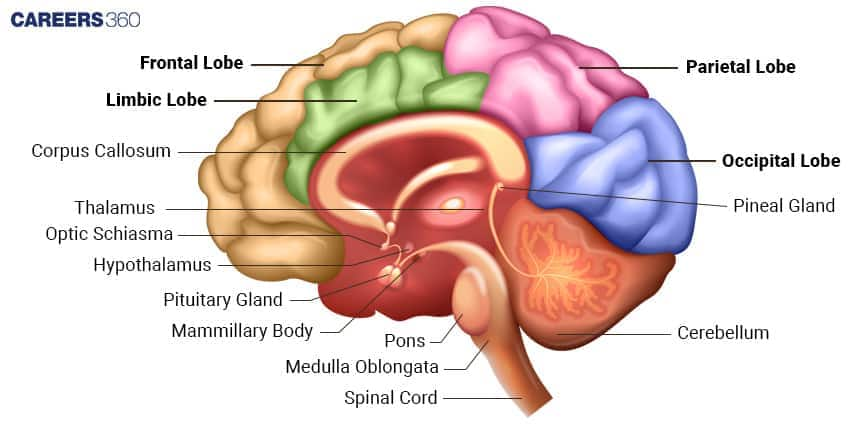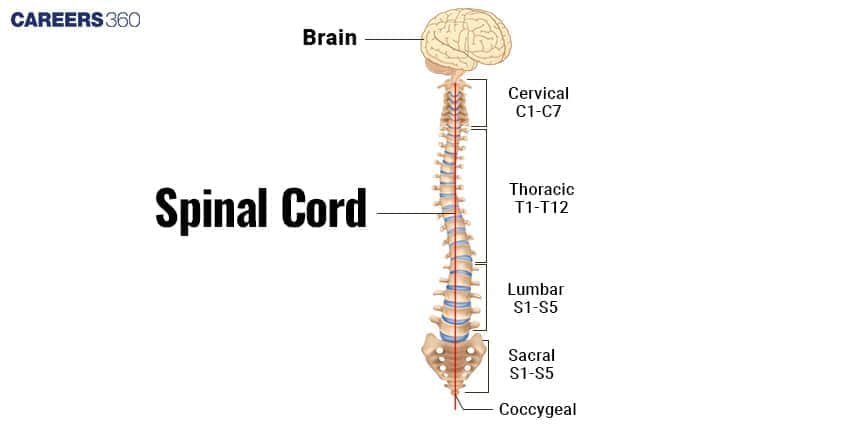Difference between Brain and Spinal Cord: Function, Anatomy and Structure
The human brain is the most complex central nervous system component that performs the control functions of thoughts, emotions, and actions. It closely relates to the spinal cord but differs in both structure and function. While the brain acts as the major processing site of sensory input, voluntary behaviour, and decision, the spinal cord acts mainly as a passageway. This difference in the functioning of the brain and the spinal cord shows the complementary ways that these two could work as central organs to establish appropriate communication and coordination leading to life processes, survival, and adaptation toward environmental changes. This is an important topic in the Neural Control and Coordination chapter in Biology.
This Story also Contains
- What is the Human Brain?
- Structure and Anatomy of Brain and Spinal Cord
- Functions of the Brain and Spinal Cord
- Differences between the Brain and Spinal Cord

What is the Human Brain?
The human brain is the command centre for the nervous system of human beings, receiving signals from the sensory organs, sending motor signals out to the musculature, and regulating critical functions within the body. It follows then, that the brain works in close partnership with the spinal cord to comprise the central nervous system, intervening in most integration and coordination of body systems.
The brain, together with the spinal cord, controls higher functions thought and action along with the maintenance functions of the body, those that allow a person to stay alive. These higher functions are integrated rather seamlessly, as anyone who experiences the repositioning of a body part can attest to. Understanding the structure and functions of the brain is very crucial in the understanding of issues related to neurology and further in the way of treating them.
Also Read:
Structure and Anatomy of Brain and Spinal Cord
The structure and anatomy are described below-
Brain
The brain is a complex organ which serves as the centre of the nervous system in controlling most of the activities in the body. It can be grossly divided into several major parts.
Cerebrum: the brain's largest division harbouring higher cognitive functions like thought, learning, and decision-making.
Cerebellum: Located at the back of the brain, it performs the very important function of coordinating all voluntary movements and maintaining balance.
Brainstem: the part that connects the brain and the spinal cord. It consists of the midbrain, pons, and medulla oblongata.
It, therefore, regulates the most basic physiologic activities of the body since it is highly involved in the following general functions respiration, cardiac activities, and sleep.
Diagram of the Brain

Spinal Cord
The spinal cord is the cylindrical bundle of nerve fibres, which extend from the brainstem downwards via the vertebral column and assort as follows:
Cervical: In the region above the neck, controlling the functioning of the upper limb and a part of the neck.
Thoracic: In the upper and mid–back controls the functioning of the trunk muscles and some parts of the abdominal organs.
Lumbar: In the lower back, controls the act of the lower limbs and lower abdomen functioning.
Sacral Region: Situated at the pelvic region controls all the functioning of the bowels, bladder, and sexual functions
Diagram of the Spinal Cord

Functions of the Brain and Spinal Cord
The brain performs several critical functions that are responsible and necessary in the body of human beings and performs the behaviour:
Brain Functions
It involves thinking, reasoning, the formation of memory, problem-solving, and receiving and understanding the language and producing it.
The brain processes and receives information about the sense organs from the environment, which includes visions, audition, and tactile sense i.e. touching, and gustation.
It is responsible for the coordination of highly learned voluntary muscle movements in all parts of the body, to allow systemic activities and for goal-directed interaction with the environment.
It coordinates the exact involuntary actions of breathing, heartbeat, digestion, and other hormone secretions to guarantee body homeostasis and allow for body stability in all aspects.
Spinal Cord Functions
It relays sensory information (such as pain, touch, and temperature) and motor commands (commands for muscle movement) to and from the brain.
The spinal cord coordinates simple reflexes, such as the knee jerk, and complex reflex arcs that require many segments of the cord.
These functions allow the acting of stimuli with no direct involvement of the body act upon stemming from the brain.
Differences between the Brain and Spinal Cord
Feature | Brain | Spinal Cord |
Neural Structure | Complex neural networks; distinct grey and white matter | Segmented structure with grey matter inside and white matter outside each segment |
Size, Weight, and Protective Layers | Larger and heavier; protected by meninges | Smaller and lighter; also protected by meninges and vertebrae |
Blood Supply | Supplied by the Circle of Willis | Supplied by anterior spinal artery and posterior spinal arteries |
Function as Central Processing Unit | The central processing unit of the body | Transmission pathway for neural signals from body to brain and vice versa |
Role in Higher-Order Functions | Responsible for consciousness, thinking, memory, and problem-solving | Primarily involved in simple and complex reflex actions |
Control over Voluntary Actions | Controls voluntary movements and higher mental functions | Executes involuntary actions and supports autonomic functions in reflexes |
Also Read:
Recommended video on "Difference between Brain and Spinal Cord"
Frequently Asked Questions (FAQs)
The cerebrum is in control of cognitive aptitudes, including the reception and processing of a variety of sensorial information, control of motor activity, and control of other autonomous functions of respiration and heart activity.
The brain is designed with intricacies and immense specialization. On the other hand, the spinal cord is the long, cylindrical, and segmented structure of the brain which is only used to transfer the neural messages between the body parts and the brain.
Disorders in the brain include stroke, Alzheimer's disease, and Parkinson's disease. On the other hand, such disorders found in the spinal cord include injuries, cracks, multiple sclerosis, and stenosis.
The former is useful in the aid of diagnosis for the Brian order when aided by MRI, CT scans, and EEG, while MRI, CT myelography, and X-ray help in this process.
For brain disorders, treatment comes in the form of medications, surgery, and cognitive therapy while spinal cord disorders are treated with medications, surgery, physical therapy, and finally an assistive device.